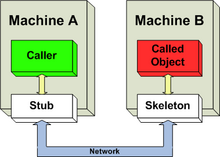16 라케르타에
16 Lacertae| 관측 데이터 Epoch J2000.0 이쿼녹스 J2000.0 | |
|---|---|
| 별자리 | 라케르타 |
| 우측 상승 | 22h 56m 23.62929s[2] |
| 탈위임 | +41° 36′ 13.9482″[2] |
| 겉보기 크기 (V) | 5.587±0.015[3] |
| 특성. | |
| 스펙트럼형 | B2 IV[4] + F6–7 + F0[5] |
| 변수형 | β Cep[6] + β Per[7] |
| 아스트로메트리 | |
| 방사 속도 (Rv) | -12.45±0.04km[8]/s |
| 고유 운동 (μ) | RA: -1.15mas[2]/yr Dec.: -4.168mas[2]/yr |
| 시차 (π) | 2.0692 ± 0.0865[2] 마스 |
| 거리 | 1,580 ± 70 리 (105 ± 20 pc) |
| 절대치수 (MV) | −2.67±0.14[3] |
| 궤도[9] | |
| 기간 (P) | 12.0969 d |
| 편심성 (e) | 0.0539±0.0026 |
| 페리아스트론 신기원을 이루다 (T) | 61.4±2.1 |
| 반암도 (K1) (iii) | 23.85±0.05km/s |
| 세부사항[3] | |
| 16 Lac A | |
| 미사 | 9.5±0.03 M☉ |
| 반지름 | 5.6±0.4 R☉ |
| 루미도 | 7,762+1,151 −1,002 L☉ |
| 표면 중력 (log g) | 3.95±0.05 cgs |
| 온도 | 23,000±200 K |
| 금속성 [Fe/H] | 0.00±0.08[10] 덱스를 만들다 |
| 회전 속도 (v sin i) | 12±1km[10]/s |
| 기타 지정 | |
| 데이터베이스 참조 | |
| 심바드 | 자료 |
16 라케르타에는 태양으로부터 약 1,580광년[2] 떨어진 곳에 위치한 라케르타의 북쪽 별자리에 있는 3중 항성계통이다[5].그것은 변광성 명칭 EN Lacertae를 가지고 있다; 16 Lacertae는 Flamsted 명칭이다.이 시스템은 육안으로 볼 때 최대 겉보기 크기가 +5.587인 희미한 청백색 후이 항성으로 보인다.[3]그것은 –12 km/s의 태양 중심 방사상 속도로 지구 가까이 이동하고 있다.[8]
더 밝은 성분의 이진성은 1910년 천문학자 올리버 J. 리에 의해 예크스 천문대에서 발견되었다.최초의 궤도 원소는 오토 슈트루브와 니콜라이 보브로브니코프에 의해 1925년에 출판되었다.[12]이것은 궤도 주기가 12.1일이고 작은 편심률이 0.05일인 단일선 분광형 이항이다.일차 성분의 일식만 검출되었지만, 생략하는 이항 변수를 형성한다.이 성분은 하루에 약 6개의 주파수를 갖는 세 개의 지배적인 맥동 모드를 가진 베타 세페이 변수 별이다.[6]B2 IV의 별 분류를 가지고 있으며,[4] B형 아거성 별과 태양 질량의 9.5배, 태양 반지름의 5.6배에 일치한다.[3]
보이지 않는 이차성은 F6-7 등급의 F형 별이다.3차 성분은 F0 등급의 11.4 항성이다.2008년 현재 경선과 27.6㎞의 각진 곳에 위치해 있다.[5]
참조
- ^ "MAST: Barbara A. Mikulski Archive for Space Telescopes". Space Telescope Science Institute. Retrieved 8 December 2021.
- ^ a b c d e f Brown, A. G. A.; et al. (Gaia collaboration) (August 2018). "Gaia Data Release 2: Summary of the contents and survey properties". Astronomy & Astrophysics. 616. A1. arXiv:1804.09365. Bibcode:2018A&A...616A...1G. doi:10.1051/0004-6361/201833051. 이 소스에 대한 가이아 DR2 기록 VizieR.
- ^ a b c d e Nieva, María-Fernanda; Przybilla, Norbert (2014). "Fundamental properties of nearby single early B-type stars". Astronomy & Astrophysics. 566: A7. arXiv:1412.1418. Bibcode:2014A&A...566A...7N. doi:10.1051/0004-6361/201423373. S2CID 119227033.
- ^ a b Lesh, Janet Rountree (December 1968), "The Kinematics of the Gould Belt: an Expanding Group?", Astrophysical Journal Supplement, 17: 371, Bibcode:1968ApJS...17..371L, doi:10.1086/190179
- ^ a b c Eggleton, P. P.; Tokovinin, A. A. (September 2008). "A catalogue of multiplicity among bright stellar systems". Monthly Notices of the Royal Astronomical Society. 389 (2): 869–879. arXiv:0806.2878. Bibcode:2008MNRAS.389..869E. doi:10.1111/j.1365-2966.2008.13596.x. S2CID 14878976.
- ^ a b Jerzykiewicz, M.; et al. (2015). "The 2003–2004 multisite photometric campaign for the β Cephei and eclipsing star 16 (EN) Lacertae with an appendix on 2 Andromedae, the variable comparison star". Monthly Notices of the Royal Astronomical Society. 454 (1): 724–740. arXiv:1508.05250. Bibcode:2015MNRAS.454..724J. doi:10.1093/mnras/stv1958. S2CID 119220117.
- ^ Samus, N. N.; et al. (2017), "General Catalogue of Variable Stars", Astronomy Reports, 5.1, 61 (1): 80–88, Bibcode:2017ARep...61...80S, doi:10.1134/S1063772917010085, S2CID 125853869.
- ^ a b Pourbaix, D.; et al. (2004). "SB9: The Ninth Catalogue of Spectroscopic Binary Orbits". Astronomy & Astrophysics. 424: 727–732. arXiv:astro-ph/0406573. Bibcode:2004A&A...424..727P. doi:10.1051/0004-6361:20041213. S2CID 119387088.
- ^ Lehmann, H.; et al. (February 2001), "A new analysis of the radial velocity variations of the eclipsing and spectroscopic binary EN Lacertae", Astronomy and Astrophysics, 367: 236–249, Bibcode:2001A&A...367..236L, doi:10.1051/0004-6361:20000344
- ^ a b Nieva, M.-F.; Przybilla, N. (2012). "Present-day cosmic abundances. A comprehensive study of nearby early B-type stars and implications for stellar and Galactic evolution and interstellar dust models". Astronomy & Astrophysics. 539: A143. arXiv:1203.5787. Bibcode:2012A&A...539A.143N. doi:10.1051/0004-6361/201118158. S2CID 119206639.
- ^ "16 Lac". SIMBAD. Centre de données astronomiques de Strasbourg. Retrieved 2019-02-02.
- ^ Struve, O.; Bobrovnikoff, N. T. (September 1925), "Orbit of the spectroscopic binary 16 Lacertae", Astrophysical Journal, 62: 139–143, Bibcode:1925ApJ....62..139S, doi:10.1086/142919



